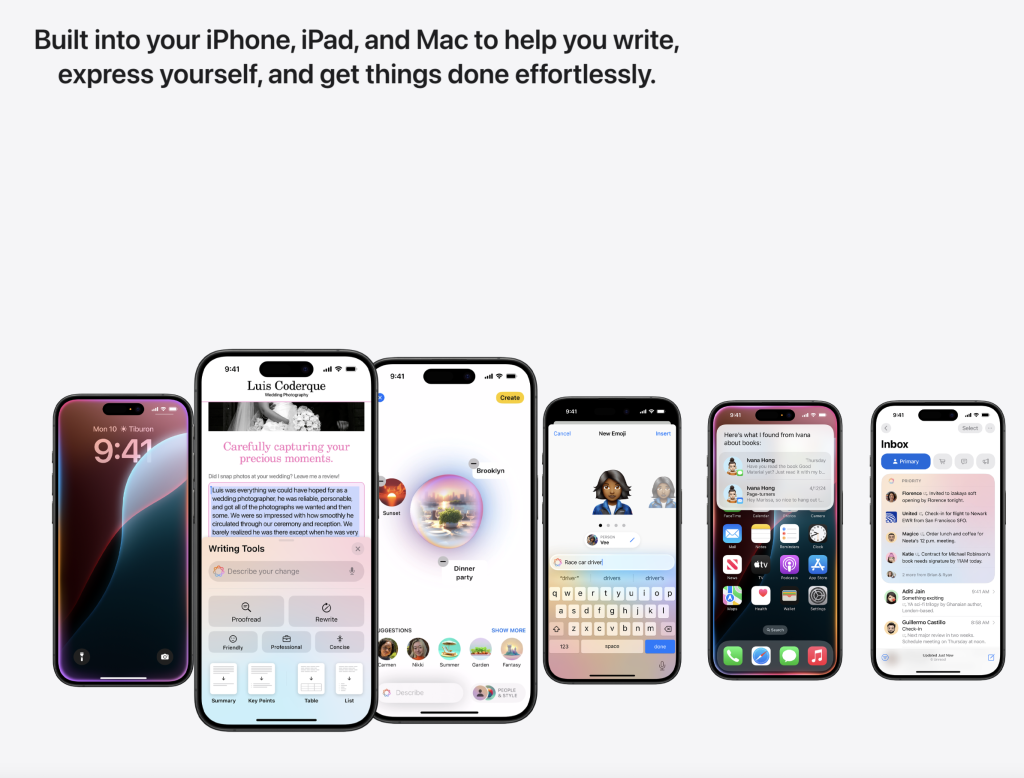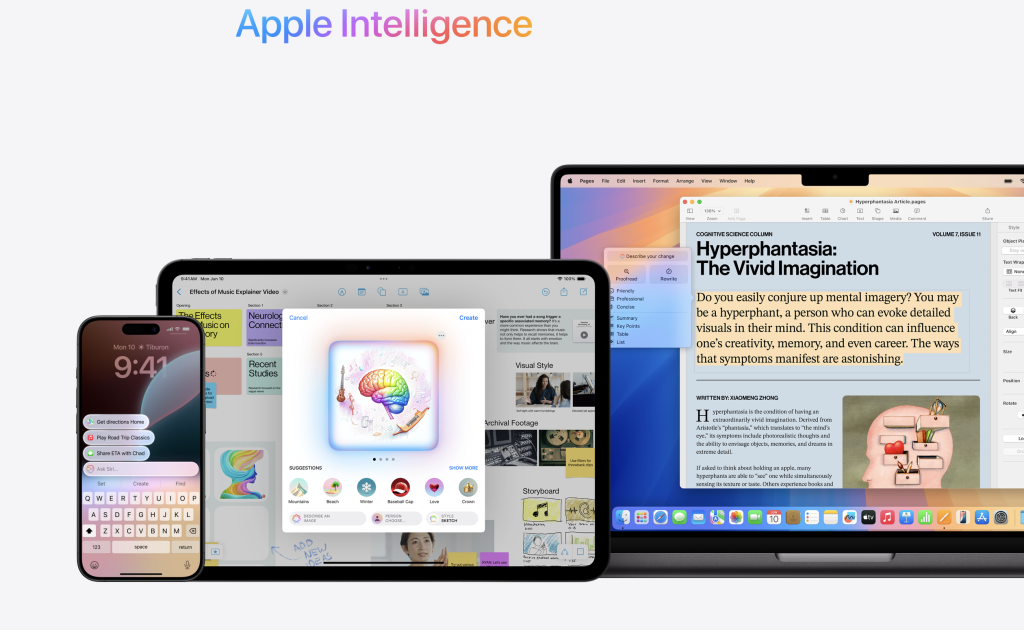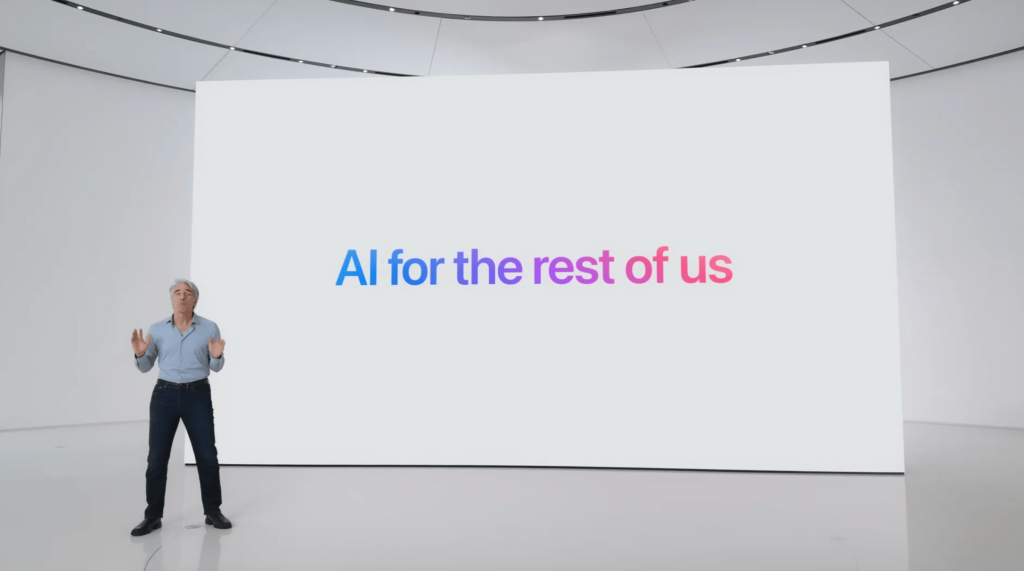Apple has unveiled its first push into AI, branded as “Apple Intelligence,” at its highly anticipated WWDC 2024 in Cupertino, California. This ambitious initiative marks Apple’s significant foray into generative AI, aiming to deeply integrate across the company’s ecosystem, from iPhone and Mac hardware to software applications like Mail, Messages, and Photos. The technology is set to roll out in the fall for iPhone 15 Pro and devices with M1 series chips and newer.
CEO Tim Cook articulated the vision behind Apple Intelligence during the announcement, emphasizing its design to be intuitive, powerful, and private. “As we look to build in these incredible new capabilities, we want to ensure that the outcome reflects the principles at the core of our products,” Cook stated. “It has to be powerful enough to help with the things that matter most to you, intuitive and easy to use, and deeply integrated into your product experiences.”

Further developments in Siri are aimed at enhancing user interaction. According to Apple, the updated Siri will allow users to communicate via typing and will understand the context better to perform tasks like scheduling messages and searching for specific information within apps. Apple illustrates this with the new “on-screen awareness” feature, where Siri can, for example, extract a driver’s license number from a photo and input it directly into a web form.
Apple is also enhancing its system-wide writing assistance, providing features both in Mail and across other apps. Whether it’s emails, texts, or notes, Apple’s AI can now offer suggestions, rewrite content, or adjust the tone of written communications, ensuring messages are crafted to convey the intended sentiment.

Apple’s AI enhancements also bring a suite of innovative features to the Photos app, setting a new bar for photo management and creativity. Users can expect improved search capabilities, allowing them to find images by very specific criteria, such as “photos of Stacy in New York wearing a pink coat.” This refinement is coupled with the ability to perform advanced edits, such as removing unwanted elements from photos, akin to Google’s Magic Eraser. Furthermore, Apple is introducing capabilities that let users generate stylized versions of existing photos, enabling the creation of personalized artwork directly from their photo libraries. These features highlight Apple’s commitment to merging AI with user-centric design, providing tools that enhance both the utility and enjoyment of personal photos.

In a partnership teased earlier this year, Apple Intelligence will also incorporate OpenAI’s ChatGPT, allowing Siri to leverage this advanced AI for responses beyond its native capabilities. This integration ensures that users can access the breadth of ChatGPT’s knowledge while maintaining strict privacy controls, as Apple asserts that it will not log any prompts or store data from these interactions.
Privacy remains at the forefront of Apple’s strategy. The new AI features are designed to process data on-device as much as possible, with a semantic index that manages personal details securely. “When you make a request, Apple intelligence analyzes whether it can be processed on device. If it needs greater computational capacity. It can draw on private cloud compute, and send only the data that’s relevant to your task to be processed on Apple silicon servers. Your data is never stored accessible to Apple. It’s used exclusively to fulfill requests, and just like your iPhone, independent experts can inspect the code that runs on these servers to verify this privacy promise,” an Apple executive explained.

Apple’s entry into generative AI has been highly anticipated, especially following similar moves by competitors like Microsoft and Google. With Apple Intelligence, the tech giant is not just catching up but is also positioning its AI as uniquely personal and privacy-focused, setting a new standard in how AI integrates with daily tech interactions.







